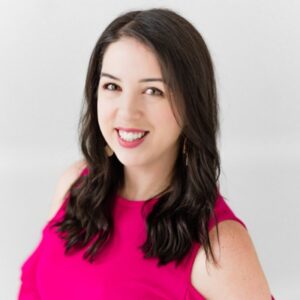Each month, this series will provide important facts and tips surrounding child safety in an effort to support parents and caregivers as they navigate reducing risks and creating the safest environment possible for the children in their lives.
During Poison Prevention Week, the nation unites to raise awareness and promote safety measures against poisoning incidents. Since 1961, this awareness week has been focused on educational endeavors around the perils of poisoning incidents, emphasizing the importance of vigilance and precautionary measures to help citizens and their families.
Despite advancements in awareness, the sobering reality of 3,809 poison-related fatalities in 2021 serves as an uncomfortable reminder of the ongoing necessity for preventative action. With more than 90% of poison incidents unfolding within the confines of homes, recognizing and addressing potential hazards can keep your children safe.
Safety Starts at Home
Learn how to identify poison risks in your home, and take simple steps to keep your family safe and healthy. It’s critical to be able to identify and take inventory of which products and substances you have throughout your home, both indoor and outdoor. Start by understanding what poses a true risk, and create a plan for storing each safely and responsibly, making sure other family members living in the home share the same understanding.
Substances leading to poison-related incidents within households include the following:
- Opioids
- Household Products
- Carbon Monoxide Poisoning
- Prescription Medicines
- Non-Prescription Medicines
- Cleaning Products
- E-cigarettes
- Food Poisoning
- Glow Sticks
- Hydrocarbons (kerosene, gasoline, oils, etc.)
- Lead Poisoning
- Mercury (thermometers)
- Mothballs
- Silica Gel
- Poisonous Plants
- Insect Sprays
- Week Killers & Outdoor Substances
Create a Plan for Poison Proofing
The Health Resources & Services Administration (HRSA) recommends families create an intentional plan for reducing risk of poison-related injury by going room by room in your house, including the garage and backyard, to see what possibilities you see for potential risk. What do you see that is dangerous, especially if handled by a child? Where do you see safer storage opportunities? How about options to reduce or remove the substance altogether?
In an effort to help reduce the overwhelm you may feel when thinking about poison proofing your home, we’ve put together a brief list to help you review each area to ensure safety.
Kitchen
- Secure cabinets and drawers with child safety locks and latches.
- Label and store food properly at correct temperatures.
- Dispose of expired food and all waste correctly and timely.
- Monitor cooking appliances and check plugs regularly.
- Always turn off gas ranges when not in use.
Bathrooms
- Secure cabinets and drawers with child safety locks and latches.
- Store all medications in their proper prescription or OTC packages.
- Lock up medications and place them in higher areas, out of reach of children.
- Avoid using household cleaners and disinfectants on hands or skin.
Bedrooms
- Be careful of houseplants that can be toxic when ingested by children and pets.
- Remove access to batteries, especially button batteries.
- Install carbon monoxide detectors near all bedrooms.
- Place personal care items like lotions, hand sanitizer, etc. in safe places.
Garage & Outdoor
- Never keep a vehicle running with the garage door closed.
- Dispose of all hazardous wastes or chemicals properly in secure containers.
- Store items such as paint, antifreeze, gas and other chemicals in locked cabinets.
- Keep detergents and other laundry products up, away and out of reach.
Education and Awareness
Whatever plan you create to remove hazards and reduce risk related to poisons in your home, make sure you share this information with all adults and caregivers in your home. Since most poisons that have the potential to hurt children are products that we use in our daily lives, it’s important to incorporate prevention habits and educate children of all ages. Explain the risk to your children, and show them which areas or products are off limits and dangerous for them. Even kids as young as one year old can benefit from age-appropriate awareness.
Take Action if Ingestion or Accidents Occur
In the unfortunate event that your child accidentally ingests or comes in contact with a harmful substance, you should seek help immediately even if you aren’t 100% sure of the severity of the issue. Contact your local poison control center through the toll-free Poison Helpline at 1-800-222-1222. The Poison Helpline works 24 hours a day, seven days a week, 365 days a year to respond in the event of a poison emergency. If you are unsure about the severity or care of an injury or accident but have immediate concern, don’t wait to head to your nearest emergency room or call 911.
Helpful Resources to Learn More
- Poison Help Website – PoisonHelp.hrsa.gov























